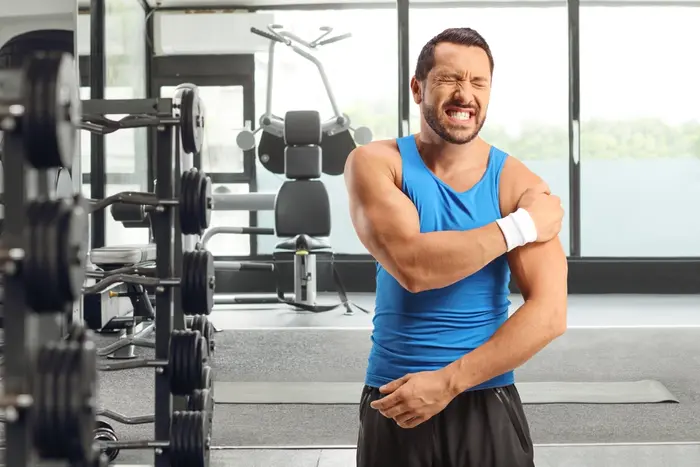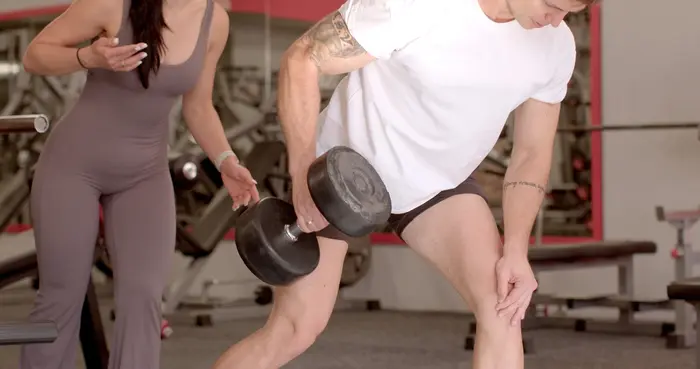Arm Is Stiff After Workout? Causes and Solutions
Many fitness buffs have arm tightness following a rigorous workout. This common problem can make even basic chores like lifting a cup awkward. Maximizing muscle recovery and enhancing performance depend on a knowledge of why is arm stiff after workout occur and How may one manage it?. Learning the reasons and remedies for post-workout stiffness can help you to make sure your fitness path stays fun and successful.
1. What Causes Muscle Stiffness After a Workout?
Muscle Fatigue and Microtears
Exercise activates your muscles, which causes little tears in the muscle fibers. Though these microtears are a normal component of muscle development and healing, they mostly contribute to post-workout discomfort.
Lactic Acid Build-Up
During demanding exercises, your body generates lactic acid as a side consequence from anaerobic energy synthesis. While lactic acid levels drop right away following exercise, their transient build-up helps to explain the pain and stiffness.
Delayed Onset Muscle Soreness (DOMS)
Usually, DOMS strikes 24 to 48 hours after a workout. This disorder causes eccentric motions in which case muscles elongate under tension. Typical causes of arm stiffness are DOMS, particularly following weightlifting or push-ups..

Does proper warm-up Help Prevent Arm Stiffness?
Benefits of Warming Up
Warming up is absolutely essential for preparing physically for activity. It increases blood flow to your muscles, so giving oxygen and nutrients needed for performance. This method not only increases muscle suppleness and joint mobility but also helps your neurological system be ready for good movement. Warm-up helps you significantly reduce your risk of stiffness and injury.
Tips for an Effective Warm-Up
- Dynamic Stretches: To tone your arm and shoulder muscles, including overhead reaches, shoulder rolls, and arm circles.
- Light Cardio: To increase your heart rate, spend five to ten minutes low-intensity sports as running, brisk walking, or jumping rope.
- Specific Muscle Activation: Include basic dumbbell motions or resistance band pull-aparts to get your arms ready for concentrated training.
- Progressive Load: IIncrease the warmth-up’s intensity sufficiently that your body moves naturally into the main workout.
Smart Strategies During Your Workout to Minimize Stiffness
- Maintain Proper Form: Incorrect technique stresses your muscles and joints too much, therefore increasing your chances of stiffness and damage. Pay close attention to intentional, exact movements and, if needed, request direction.
- Stay Hydrated: Dehydration can worsen muscular tightness and pain. Before, during, and after your exercise, sip water to maintain appropriate levels of hydration.
- Pace Yourself: Extreme effort is the major reason one feels stiff after working out. Avoid too intense physical exercise especially if you are starting an exercise program or resuming after a break.

Post-Workout Tips to Ease Muscle Stiffness in Arms
Stretching and Cool Down
As much cooling down as heating up determines the degree of stiffness reduction. Target your shoulders, arms, and upper back especially with stationary stretches. Using one hand behind your head, gently pull your elbow in a triceps stretch. You might also stretch your shoulders across-body. Spend 20 to 30 seconds in each position, then breath deeply to help your muscles relax and open.
Massage or Foam Rolling
Self-massage techniques or foam rollers will help to relax muscles and significantly enhance blood flow. Work on awkward areas and apply consistent, slow pressure. For arms, rub smaller muscle groups using a massage ball or roll the biceps and triceps on a foam roll.
Hydration and Nutrition
- Water and Electrolytes: The electrolytes found in sports drinks and coconut water, such as magnesium and potassium, facilitate recuperation.
- High protein Diet: consuming proteins Thirty minutes post-exercise improves the repair and regeneration of muscle fibers. Options include lean meats, eggs, or plant-based proteins such as lentils and chickpeas.
- Anti-Inflammatory Foods: Incorporate foods rich in antioxidants and anti-inflammatory compounds, such as cherries, spinach, walnuts, and turmeric, to facilitate muscle recovery and alleviate tension.
Rest and Recovery
Give your muscles enough time to grow and repair. Every night try to obtain seven to nine hours of quality sleep; this is when most of your body heals. Perhaps consider combining active recovery days with moderate yoga or walking to keep blood flowing without straying from your muscles. Avoiding overtraining and chronic stiffness depends entirely on rest days.
Do Supplements and Recovery Aids Really Work?
Common Supplements
- Protein Powders: Help muscles heal and flourish. Select a premium plant-based or whey protein.
- BCAAs (Branched-Chain Amino Acids): Might help with healing time and ease muscular pain.
Natural Recovery Aids
- Turmeric: includes the potent anti-inflammatory agent curcuma.
- Omega-3 Fatty Acids: Found in walnuts, flaxseeds, and fish oil, they can ease muscular aches.

6. When to Worry About Arm Stiffness
Though occasional stiffness is normal and a natural part of recovery, occasionally it may point to a more serious issue. Particularly if it affects routine activities or worsens with time, chronic or severe pain should not be discounted. One should be sensitive for warning signs including:
- Swelling or Bruising: These could indicate a tear in a muscle, strain, or other soft tissue injury.
- Sharp or Shooting Pain: Unlike typical post-workout soreness, severe pain often suggests nerve damage or involvement.
- Stiffness Lasting More Than 72 Hours: Extended stiffness can indicate an underlying disease, overtraining, or improper recovery.
- Limited Range of Motion: Standard or fundamental choreography difficulties moving your arm could point to more than just basic muscular soreness is occurring.
- Accompanied Symptoms: Fever, redness, or warmth all over could indicate an inflammation or infection needing immediate treatment.
If you experience any of these symptoms, see a doctor immediately to rule out more serious conditions, joint problems, or muscle tears. Early intervention reduces more problems and promises a better recovery.
Conclusion: Arm Is Stiff After Workout?
Arm stiffness after a workout is unavoidable, but it should not stop you from improving. Knowing its origins and using appropriate prevention and recovery strategies will enable you to reduce discomfort and increase performance. Give warm-ups, proper form, hydration, and recuperation top importance so your fitness route flows more naturally and is more rewarding.
Share personal tips on reducing arm stiffness. Comment on them in the space given below to kick off a conversation!
